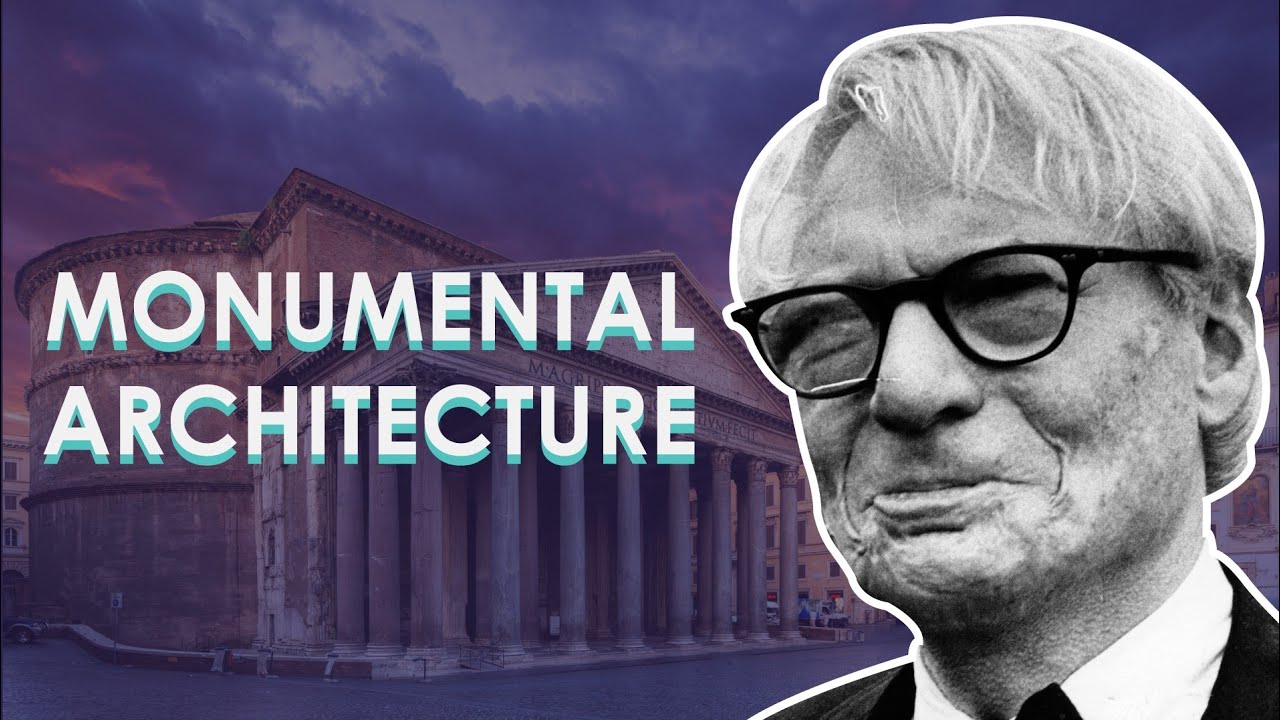The History And Significance Of Monumentality In Architecture - From Ancient Civilization To Modern Metropolis
The history and significance of monumentality in architecture have been an essential element of human civilization since the beginning of history. Throughout the ages, people have erected grandiose buildings, statues, and other structures to commemorate important events, individuals, and ideals.
Author:George EvansMar 16, 20238.6K Shares227.4K Views

Monumentality in architecture refers to the use of grandiose and impressive structures that are designed to make a statement. These structures are meant to inspire awe, admiration, and a sense of grandeur. Monumentality in architecture has been an essential element of human civilization since the beginning of history.
Throughout the ages, people have erected buildings, statues, and other structures to commemorate important events, individuals, and ideals. This article will explorethe history and significance of monumentality in architecture, including its origins, development, and impact on human culture.
The History And Significance Of Monumentality In Architecture
Monumentality in architecture is a concept that has been prevalent throughout human history. It refers to the grandiose and imposing nature of buildings, statues, and other structures that are designed to convey a sense of power, importance, and significance.
Monumentality in architecture has been used for various purposes, ranging from commemorating important events and individuals to expressing cultural and national identity. In this article, we will explore the history and significance of monumentality in architecture.
Origins Of Monumentality In Architecture
The origins of monumentality in architecture can be traced back to the earliest human civilizations. Ancient civilizations such as Egypt, Mesopotamia, and the Indus Valley built grandiose structures that served both practical and symbolic purposes.
These structures were meant to reflect the power and wealth of the ruling class and to establish a sense of order and stability in society.
The ancient Egyptians, for example, built massive pyramids to house the bodies of their pharaohs, while the Mesopotamians built ziggurats as religious temples and administrative centers.
In ancient Greece, monumentality in architecture took on a different form. Instead of building massive structures, the Greeks focused on creating elegant and harmonious buildings that reflected their ideals of beauty and proportion.
The Parthenon, one of the most famous Greek buildings, is a perfect example of this approach. The Parthenon was built as a temple to the goddess Athena and is renowned for its beautiful columns, intricate friezes, and harmonious proportions.
The Romans, on the other hand, took a more grandiose approach to monumentality in architecture. They built massive public works, such as aqueducts, amphitheaters, and triumphal arches, to celebrate their military conquests and to showcase their power and wealth.
The Colosseum in Rome, for example, is one of the most famous Roman monuments and is a testament to the grandeur and power of the Roman Empire.
Development Of Monumentality In Architecture
Throughout the Middle Ages and the Renaissance, monumentality in architecture continued to evolve. In the Middle Ages, churches and cathedrals became the most important structures in Europe, and their architecture reflected the spiritual and religious ideals of the time.
Gothic cathedrals, with their soaring spires, intricate stone carvings, and stained glass windows, were designed to inspire awe and reverence in the faithful.
During the Renaissance, monumentality in architecture took on a new form. The Renaissance was a period of great intellectual and artistic creativity, and architects such as Michelangelo, Brunelleschi, and Palladio were at the forefront of this movement.
They sought to create buildings that were not only grandiose but also beautiful, harmonious, and balanced. The dome of the Florence Cathedral, designed by Brunelleschi, is a perfect example of this approach.
The dome is not only massive but also elegant and graceful, and it has become one of the most iconic symbols of the Renaissance.
In the 18th and 19th centuries, monumentality in architecture reached new heights. The Industrial Revolution led to a massive increase in wealth and power, and this was reflected in the grandiose buildings that were erected during this time.
Palaces, government buildings, and museums became the most important structures in many cities, and they were designed to reflect the power and wealth of the ruling classes. The Palace of Versailles in France, for example, is a massive and ornate building that was built to showcase the power of Louis XIV.
Significance Of Monumentality In Architecture
Monumentality in architecture has also been used to establish a sense of order and stability in society.
The massive public works of ancient civilizations, such as the aqueducts and amphitheaters of Rome, were designed to showcase the power and wealth of the ruling class and to establish a sense of order and stability in society.
Similarly, the grandiose public buildings of the 18th and 19th centuries were designed to reflect the power and authority of the ruling classes and to establish a sense of order and stability in society.
Monumentality in architecture has also been used to inspire awe and admiration in people. The grandiose buildings and structures of ancient civilizations, such as the pyramids and ziggurats, were designed to inspire a sense of awe and reverence in the people who saw them.
Similarly, the grandiose public buildings of the 18th and 19th centuries were designed to inspire awe and admiration in the people who saw them and to reinforce the idea that the ruling classes were powerful and important.
Monumentality in architecture has also been used to express cultural and national identity. The grandiose public buildings of the 18th and 19th centuries were often designed to reflect the cultural and national identity of the people who built them.
For example, the Palace of Westminster in London, which houses the British Parliament, is a grandiose and ornate building that reflects the cultural and national identity of the British people.

Monumentality in Architecture - Louis Khan
People Also Ask
How Do Monumentality And Sustainability Relate To Each Other In Architecture?
Monumentality and sustainability can be at odds with each other in architecture, as the grandiose nature of monumental buildings often requires significant resources and energy to maintain.
How Has Monumentality In Architecture Influenced Art And Literature?
Monumentality in architecture has influenced art and literature by inspiring artists and writers to create works that reflect the grandiose and imposing nature of monumental buildings and structures.
What Are Some Criticisms Of Monumentality In Architecture?
Some criticisms of monumentality in architecture include the excessive cost and resources required to maintain such buildings, the potential for such buildings to become symbols of oppression and authoritarianism, and the negative impact such buildings can have on the surrounding environment.
How Will Monumentality In Architecture Continue To Evolve In The Future?
Monumentality in architecture will likely continue to evolve in the future as technology and societal values change, and as architects and designers seek to balance the grandiose nature of monumental buildings with concerns for sustainability and social justice.
Conclusion
The history and significance of monumentality in architecture have been an essential element of human civilization since the beginning of history. Throughout the ages, people have erected grandiose buildings, statues, and other structures to commemorate important events, individuals, and ideals.
Monumentality in architecture has been used to establish a sense of order and stability in society, to inspire awe and admiration in people, and to express cultural and national identity. Monumentality in architecture has had a profound impact on human culture and society, and it will continue to do so in the future.

George Evans
Author
George Anderson, an exceptional architectural designer, envisions and brings to life structures that transcend the realm of imagination. With an unwavering passion for design and an innate eye for detail, George seamlessly blends form and function, creating immersive spaces that inspire awe.
Driven by a deep appreciation for the interplay of space, light, and materials, George's innovative approach redefines the possibilities of architectural design. His visionary compositions leave an indelible mark, evoking a sense of wonder and transforming the built environment.
George Anderson's transformative designs and unwavering dedication continue to shape the architectural landscape, pushing the boundaries of what is possible and inspiring generations to come.
Latest Articles
Popular Articles
